A infrastructure project more than a half century in the making has finally reached the finish line with last week’s official opening of the Grand Central Madison station, the centerpiece of the $11.1 billion East Side Access plan to bring Long Island Rail Road service to Grand Central Terminal in Midtown East. Multiple companies designed, engineered, and collaborated on the project and include AECOM and Jacobs as project managers; WSP as a managing partner of a three-firm joint venture that includes STV and Parsons; Tutor Perini Corporation; Dragados; Judlau Contracting; Skanska; Michels; Comstock; Halmar International; Schiavone; Piccone; Five Star; Yonkers Electric; Tully Environmental; and EJ Electric. The new terminal sits 150 feet below the existing Grand Central facility, along Vanderbilt Avenue between East 43rd and East 48th Streets. The first ceremonial train ran from the Jamaica station in Queens and arrived at the Grand Central Madison station on January 25 at 11:07 a.m.
Construction on East Side Access commenced in 1969, when crews began digging tunnels under the East River directly below the Roosevelt Island subway tubes that now service the F train. The project ground to a halt during the 1975 New York City fiscal crisis and wasn’t revived until the late 90s, with work resuming in earnest in 2006. Over the past two decades, the project navigated a litany of delays and budget overruns as crews extended the tunnels from East 63rd Street to Park Avenue and down to East 43rd Street, culminating in the construction of the new terminal.
The new station provides a long-awaited alternative for Long Island-based commuters, who until now were relegated to arrive at Penn Station. The project is expected to boost train capacity to and from Manhattan by 50 percent and help alleviate pressure on Penn Station’s notoriously overcrowded and aging infrastructure. Grand Central Madison features 22 elevators and 47 escalators and is anticipated to handle nearly 160,000 daily commuters. It also offers the added convenience of direct transfers to the Metro-North Railroad.
The two tunnels lead into the terminal with upper and lower levels, each with a pair of tracks flanking a central platform, and are all joined by an ADA-accessible mezzanine with staircases, escalators, and elevators. The western tunnel contains tracks 201, 202, 301, and 302, while the eastern tunnel has tracks 203, 204, 303, and 304.
Arriving passengers will proceed from the mezzanine to four groups of escalators running beneath East 45th to East 48th Streets. The longest of these are 182 feet long and 90 feet in depth, the longest and deepest in the city, and take roughly 100 seconds to ride.
The escalators lead to Madison Concourse, which is lined with 25,000 square feet of retail space that has yet to open for business. A separate ADA-accessible escalator was also constructed to join the mezzanine and concourse. Several staircases and elevators connect to Metro-North tracks 11 through 42 and tracks 102 through 114. The facility also includes bathrooms, a ticketed waiting room, ticket machines for the LIRR and AirTrain, a customer service office with an LIRR care ambassador, a police station, and a lactation room.
The Shuttle, 4, 5, 6, and 7 trains can be accessed at the southernmost end beneath East 43rd Street through the base of One Vanderbilt, or by exiting to Grand Central Terminal’s dining concourse and up to the main hall.
The concourse and mezzanine are adorned with numerous large-scale glass mosaics by Yayoi Kusama and Kiki Smith. Kusama has the largest commission measuring 875 square feet in surface area and over 120 feet in length. Titled “A Message of Love, Directly from My Heart unto the Universe,” the colorful piece sits directly across from the customer amenities.
Kiki Smith created a similarly large glass mosaic at the southern front side of the Madison concourse titled “River Light.” Below is a close-up of a small section.
Her other four works, “The Sound,” “The Presence,” “The Water’s Way,” and “The Spring,” are located across from the bottom of each mezzanine escalator.
Alongside the mosaics are ten large-scale photographs by Paul Pheiffer lining the columns by the doors from the dining concourse. Titled “Still Life,” the works are part of a rotating exhibition made possible through a partnership with the International Center of Photography (ICP). The facility will also showcase digital art including a collection of three commissioned pieces by artists Gabriel Barcia-Colombo, Jordan Bruner, and Red Nose Studio.
The circular ventilation ducts have been artfully incorporated into the ceiling design on the mezzanine level, as seen in the below photo.
Grand Central Madison is accessible by four street-level entrances: the north side of East 42nd Street and the east side of Madison Avenue; the southwest corner of East 43rd Street and Vanderbilt Avenue; the north side of East 44th Street between Madison and Vanderbilt Avenues; and the north side of East 48th Street between Madison and Park Avenues. Current hours of operation are weekdays from 6:15 a.m. to 8:30 p.m. and 6:45 a.m. to midnight on weekends. Full service will begin in the coming weeks, after which the station will only close daily between 2 a.m. and 5:30 a.m.
Subscribe to YIMBY’s daily e-mail
Follow YIMBYgram for real-time photo updates
Like YIMBY on Facebook
Follow YIMBY’s Twitter for the latest in YIMBYnews

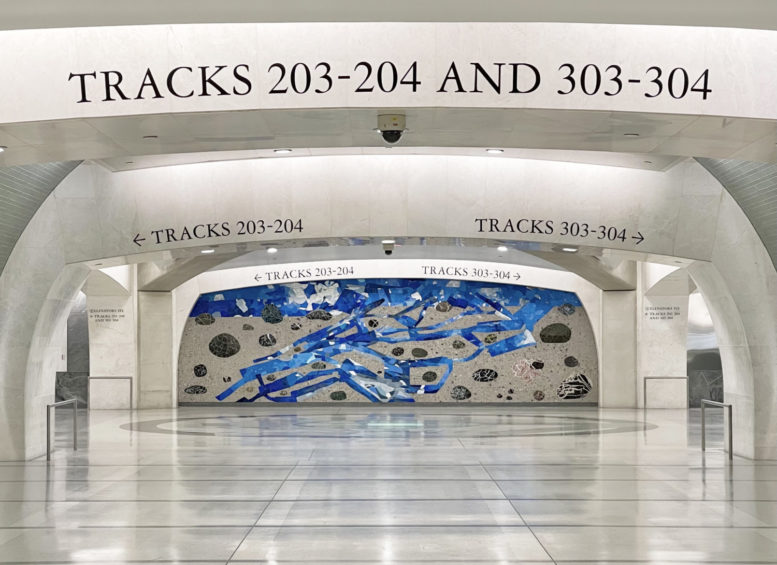

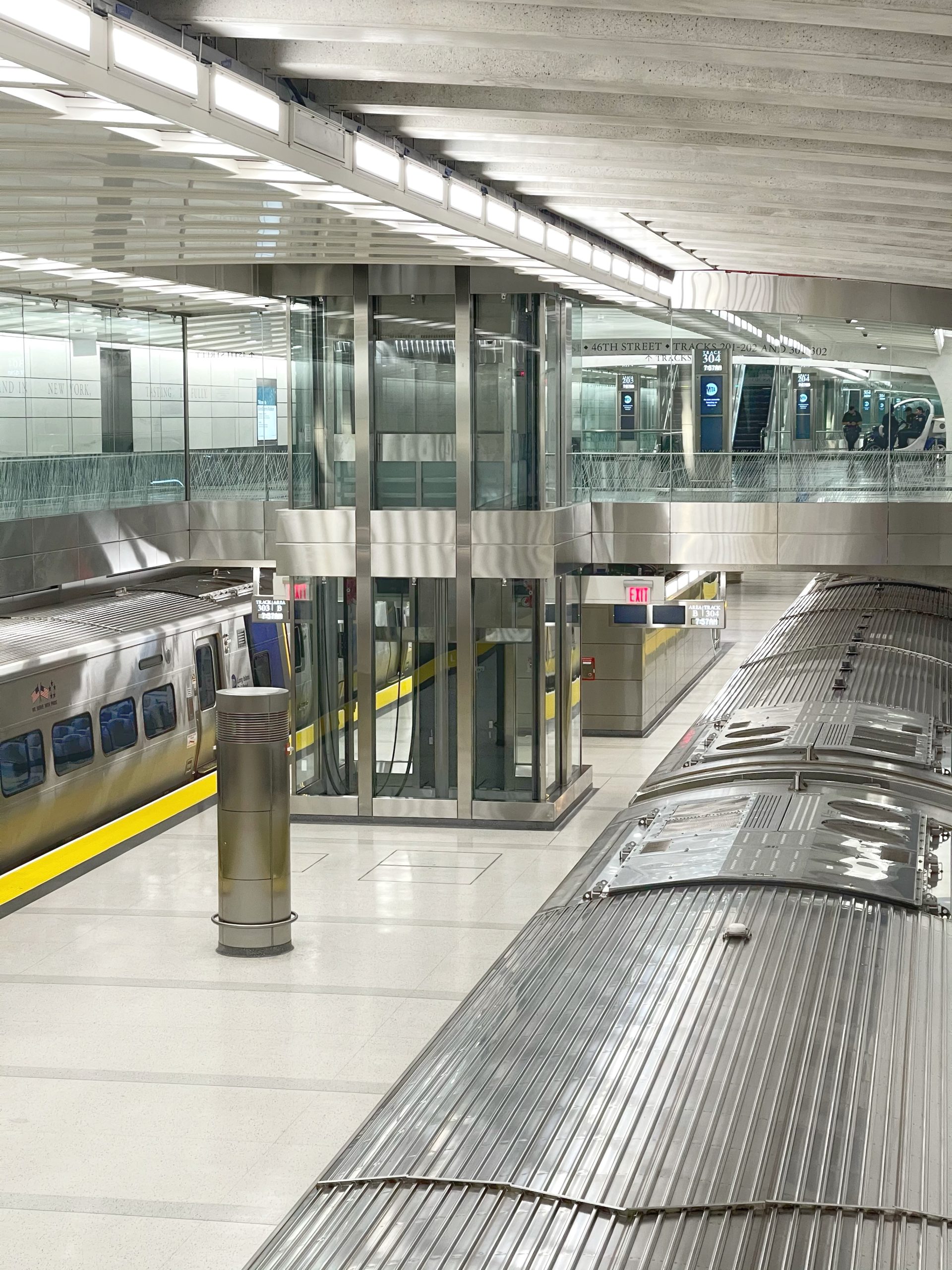
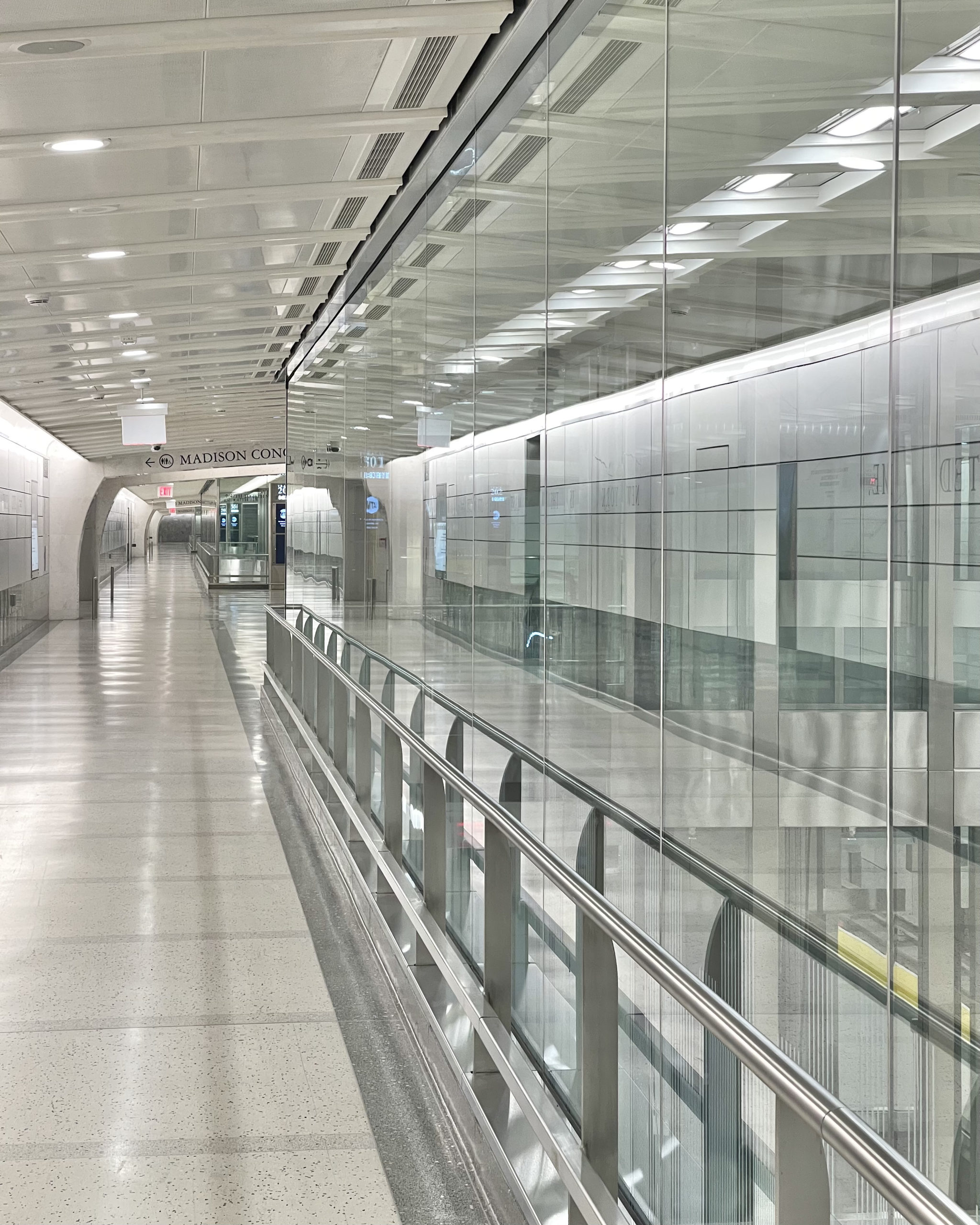
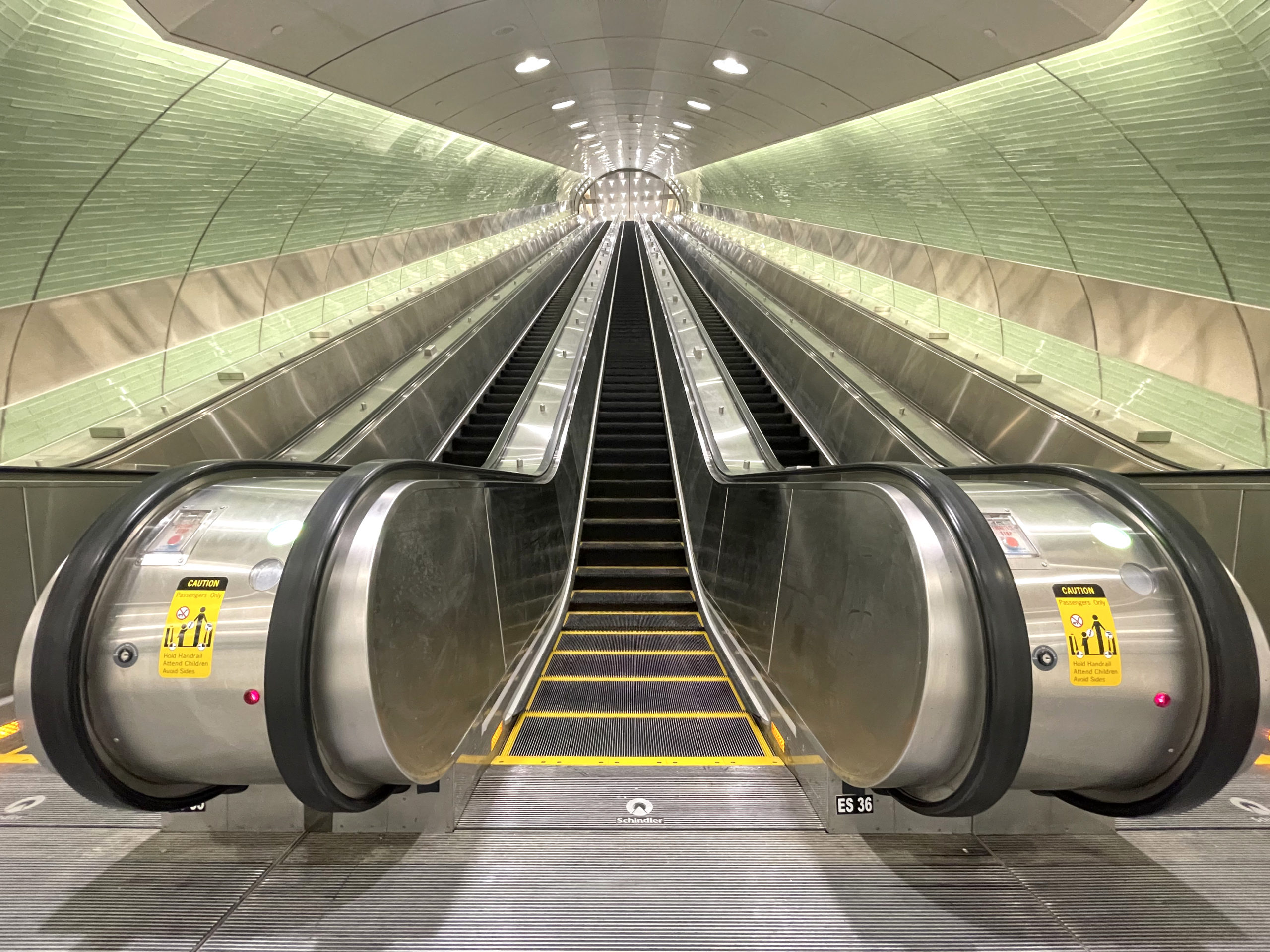


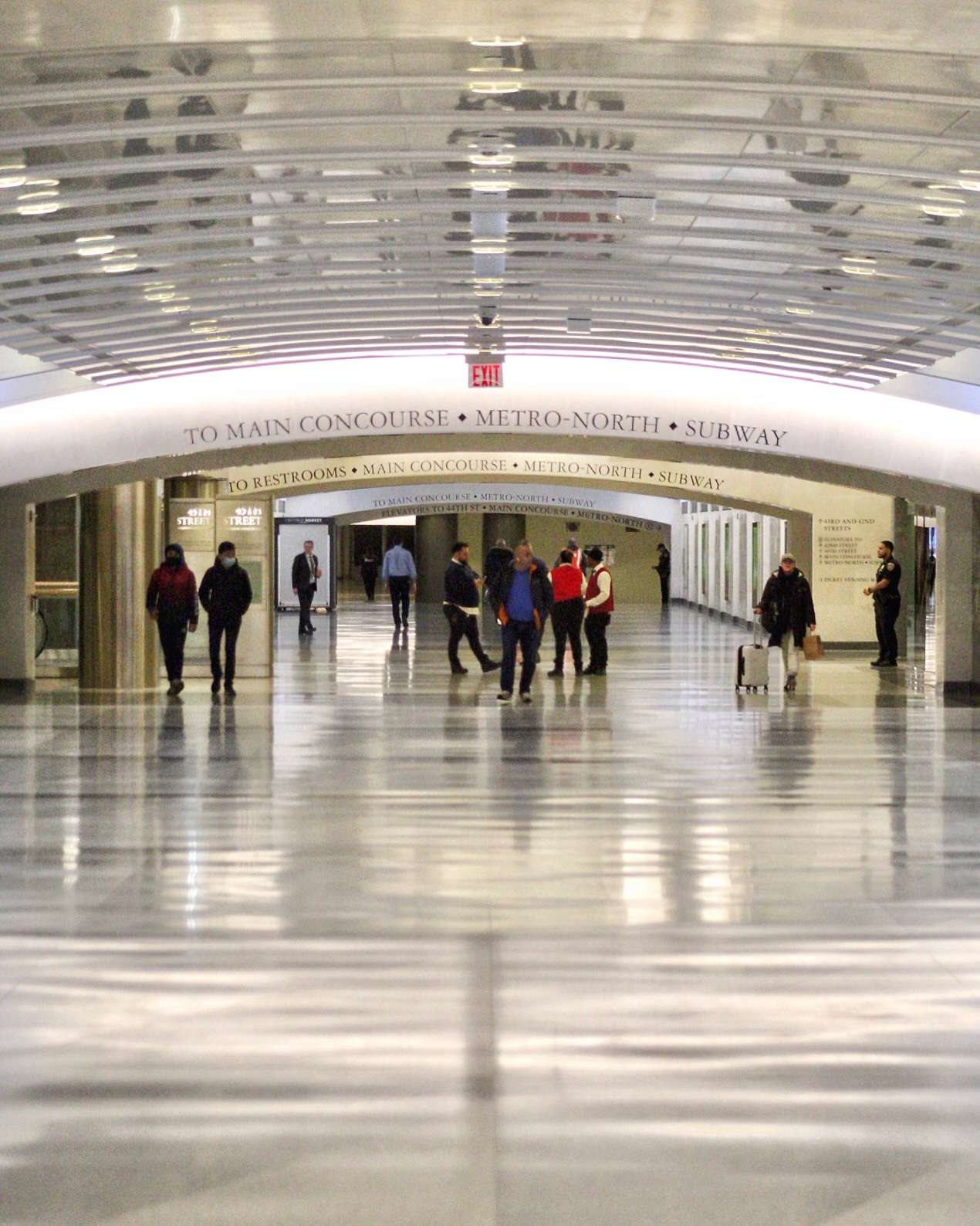
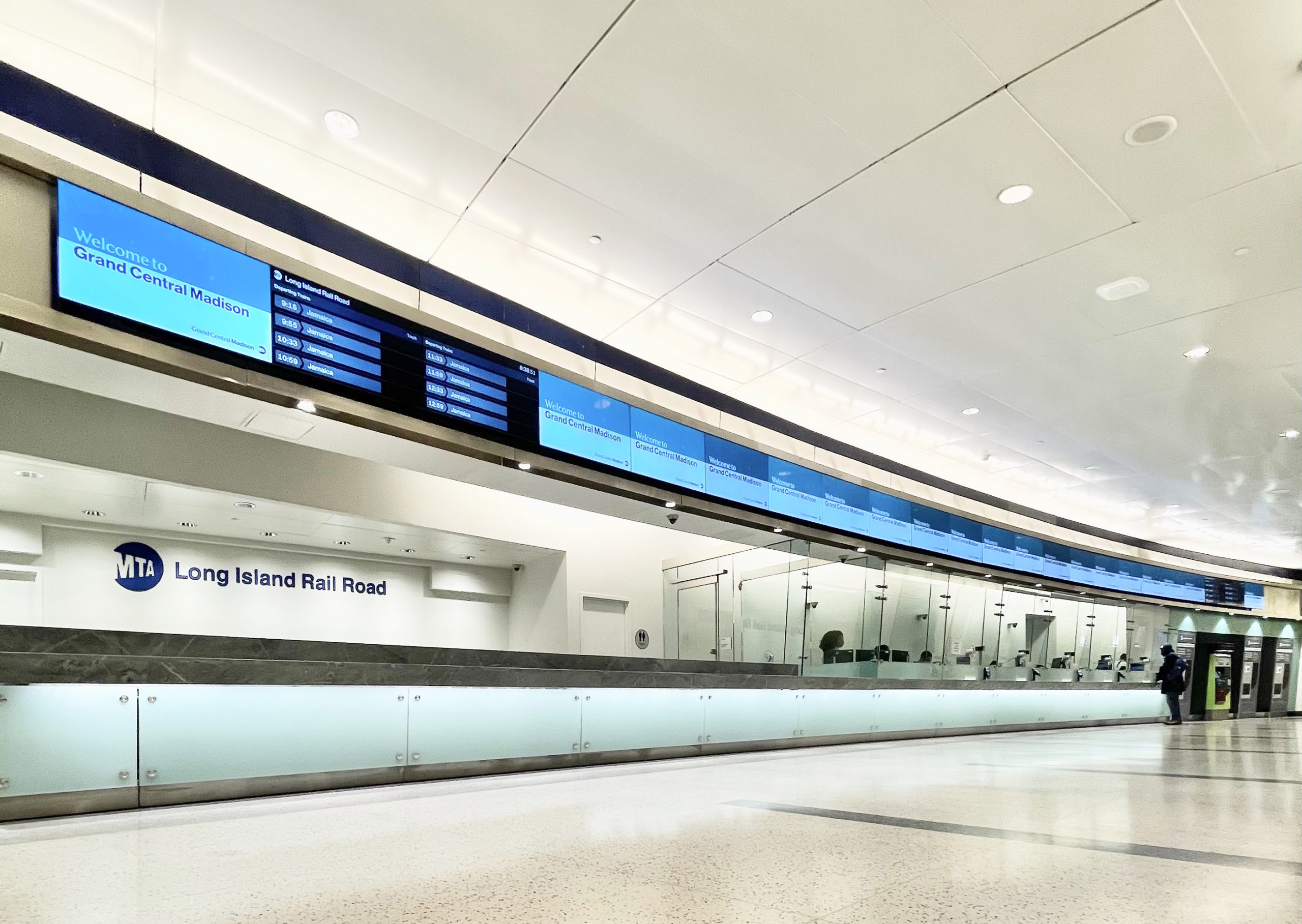
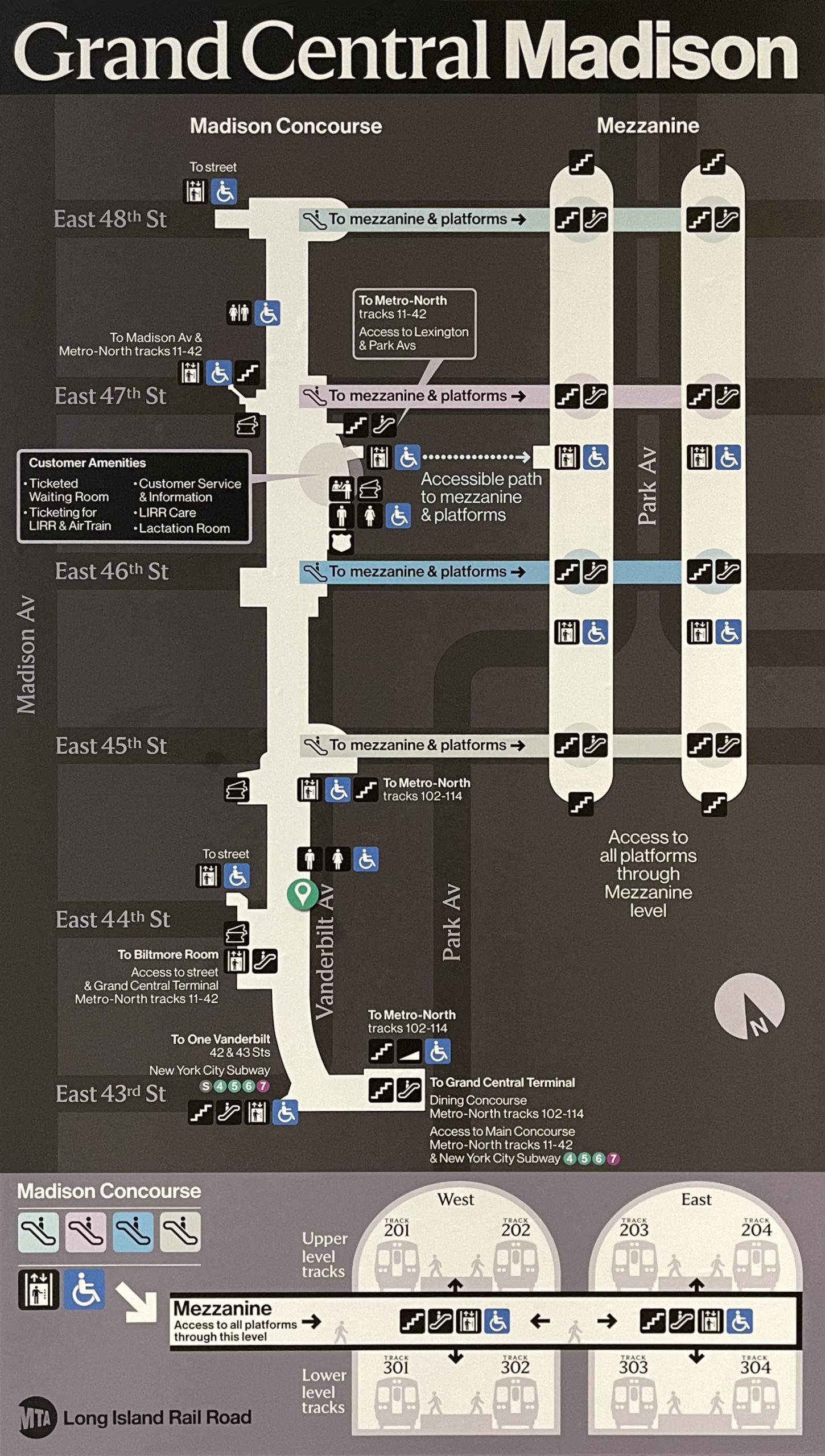


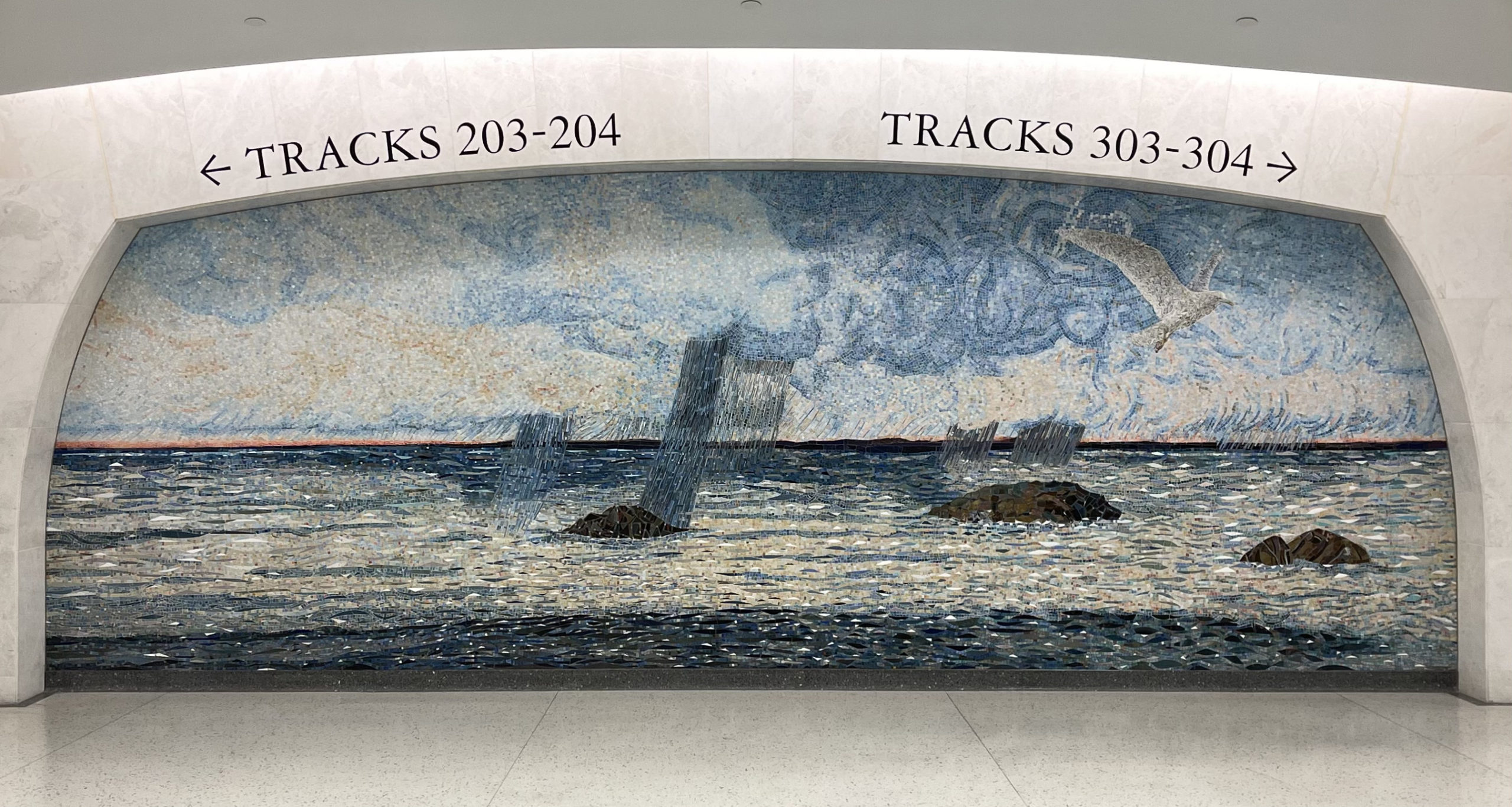

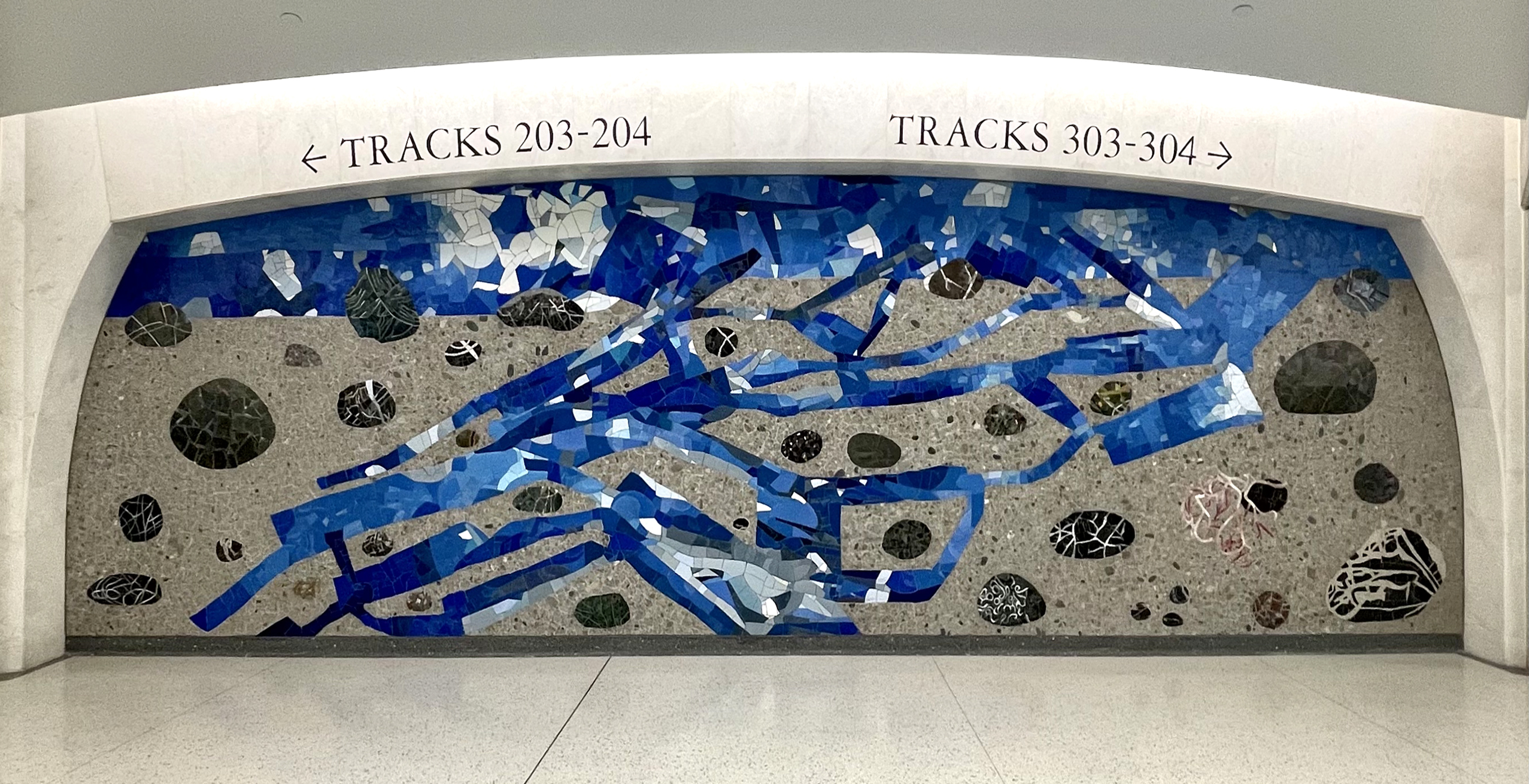

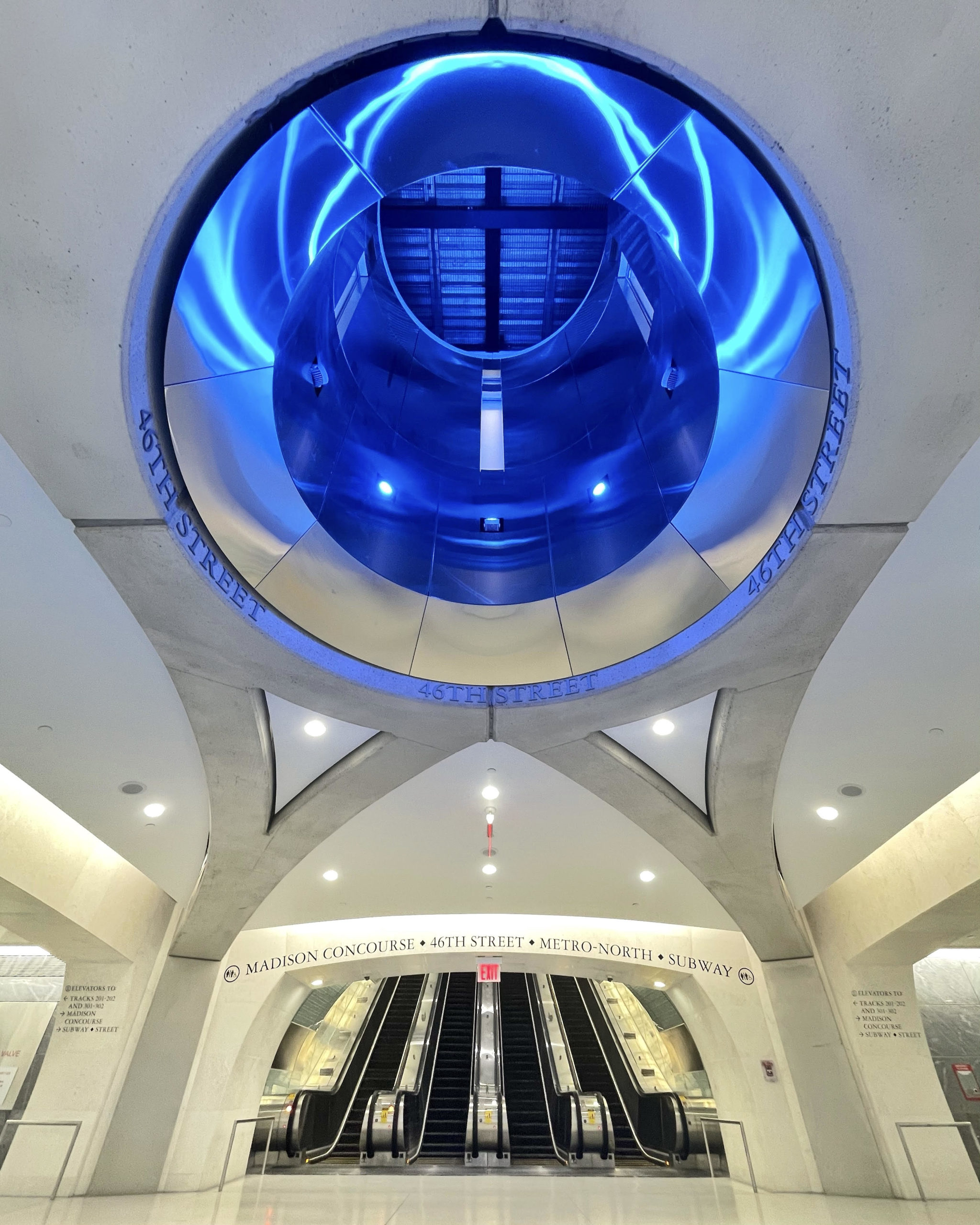




Convenient and uncomplicated in the station with the way up and down is clearly marked, escalators are also important in transporting passengers. For those who don’t like walking stairs, about artistic every piece is worth to looking at its attractive: Thanks to Michael Young.
I visited it on Monday to photograph the terminal and document it in 8k HDR Video. The facility reminds me of a mix of three things the Second Ave Subway (platforms), Grand Central Terminal (signage and vaulting)and an Airport concourse (passageways. The escalators are quite impressive and are not disorienting as the tile work is oriented properly unlike Hudson Yards which is at an angle to vertical. Hopefully the facility will remain clean and not fall into disrepair like many MTA properties.
It’s an amazing new asset for the city. Thrilled to have it. What’s the plan for maintenance. There are stations with 2 Escalators that are always broken. How is the city going to keep 47 of them clean and working?
They’re not. LIRR Grand Central is unique in that they have contracted third-party maintenance of all escalators. I believe Schindler the manufacturer will be responsible for keeping all the escalators in perfect working order and will be penalized if they are neglectful.
Is it that much faster then taking LIRR to Hunterspoint Ave and then getting on 7 train?
That doesn’t stop being an option just because ESA is now an option. Just like a Woodside transfer to a 7 express is still an option. MOST travelers on LIRR though would prefer not to make a transfer at all. ESA isn’t JUST about access to the east side from LI, it’s also about freeing up capacity at Penn to offer new services for M-N riders. It’s a big price tag but no one in the future is going to be suggesting that ESA was somehow a mistake.
You stated 50+ years in the making. I’m 74 y/o and remember when the project started. From what I remember, however, the LIRR tunnel wasn’t added as an afterthought. The 63rd St. tunnel was double-decked from the “get go”; Rohan (MTA head) and Gov. Rockefeller laid out plans when the MTA bought out bankrupt Penn/Central’s LIRR and then operated it. Unfortunately, people think that the MTA operates all of the transit systems. It doesn’t. The setup, rather, is that all of the public authorities (NYCTA, MaBSTOA, SIRTA, etc.) have an interlocking Bd of Dir with MTA for planning and funding purposes. Trial lawyers are well aware of these distinctions because it’s legal malpractice to sue the MTA instead of the proper public authority.
The fact that the MTA doesn’t operate and function like a monolithic regional transport agency is exactly why we are lacking in much of the integration and just plain common sense that one would see in a foreign network like TfL.
And yes there seems to be some confusion out there with low information folks regarding the design function if the 63 St tunnel. You are correct it was always meant to carry subway on the upper and the LIRR on the bottom. The 70s were devastating for the city’s transit expansion hopes and by 1980 the use the lower level was built for was all but declared dead and access to the tunnel sealed on both ends until the ESA initiative was revived in the mid-1990s.
Absolutely magnificent. Can’t wait to see it on Saturday. This may be very, very delayed but the end product is smashing. Modern and streamlined, and not a boondoggle. Much needed!
Yep
I agree, I’m glad it’s finally done and is being put to use. Can’t wait to see this even more used when all the new midtown offices towers on park avenue get finished
A useless $11 billion disaster
“New York City Completes Construction on Latest American Transit Disaster”
Vice 2023 January 25 by Aaron Gordon
Nope
It took more than fifty years to get here. But, in the end, it looks fantastic.
I love the mosaics and those escalators are an engineering feat in and of themselves too!
“Once planned to be operational by 2009 at a cost of $4.3 billion, East Side Access was then rescheduled to open in 2017, 2016, 2018, 2019, by April 2018, the MTA was looking to start passenger service in December 2022, at an estimated cost of $11.1 billion.”
Incompetence and its parasite corruption is why we can’t have more nice things.
They did run into some engineering issues that resulted in change orders and setbacks, but yes, the driver of MTA cost overruns as we all know is all the usual suspects:
Outrageous union work rules that result in 4 men doing the work that 3 can handle. Workers literally standing around idle.
Out of control abuse of overtime pay… Much of it intentionally coordinated to line pockets of the supervisor class and bilk the taxpayer. Textbook corruption.
—I support unions in general but this kind of abuse is disgusting and robs the public of other capital improvement projects that they would benefit from. —
An over-reliance on outside consulting because American agencies have no in house expertise on how to build anything apparantly and barely more on how to run them. Look at this, SAS, MBTA Green Line, CAHSR and a plethora of other examples. Outside consultants make an absolute killing on the public dime.
Overly stringent safety regulations… Redundant fire safety regs… Safety this safety that… That in many cases are significantly more over engineered than other first-world counterparts.
And the list goes on….
It’s very beautiful. When do the homeless and druggies arrive?
I bet you comment every day you negative krap about NYC at the New York Post. Go Away
Sad
…and all because Metro North apparently refuses to share track space with LIRR, despite not using all of their platforms. (Or so I am told.)
For passengers waiting to board or whose trains are delayed, are there any seating in the lower concourse, or are we so anti-homeless nowadays that you have to bring your own chair?
An LIRR ESA into the lower level of GCT would have been next to impossible due to grades as well as permanently rob M-N of future capacity and expansion into GCT. The deep ESA station was the best option and that is why it got built.
Yeah I agree the concourse and platform could use some seating. Its unclear why they avoided it so much.
Can it be accessed through original Grand Central or only by the street?
Both. On East 48th Street and inside grand central. See the map in the article
When are they going to build the tunnel to New Jersey. That carries tens of thousands of more passengers per day let alone access to the entire east coast.
President Biden was there yesterday—they’re building it right now! Thank you, bi-partisan infrastructure bill!
I visited the Madison project today and was astonished at how huge it is. It may even be larger than the concourses of Penn Station. Marble, mosaics, and terrazzo abound. I did notice some “alcoves” that might prove problematic for safety in the future. At present, it is full of police and MTA staff.